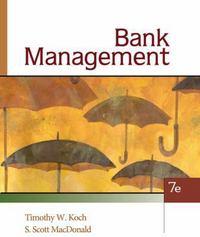Question
1. Gomez runs a small pottery firm. He hires one helper at $12,000 per year, pays annual rent of $5,000 for his shop, and spends
1. Gomez runs a small pottery firm. He hires one helper at $12,000 per year, pays annual rent of $5,000 for his shop, and spends $20,000 per year on materials. He has $40,000 of his own funds invested in equipment (pottery wheels, kilns, and so forth) that could earn him $4,000 per year if alternatively invested. He has been offered $15,000 per year to work as a potter for a competitor. He estimates his entrepreneurial talents are worth $3,000 per year. Total annual revenue from pottery sales is $72,000. Calculate the accounting profit and the economic profit for Gomez's pottery firm.LO6.2
2. Imagine you have some workers and some handheld computers that you can use to take inventory at a warehouse. There are diminishing returns to taking inventory. If one worker uses one computer, he can inventory 100 items per hour. Two workers sharing a computer can together inventory 150 items per hour. Three workers sharing a computer can together inventory 160 items per hour. And four or more workers sharing a computer can together inventory fewer than 160 items per hour. Computers cost $100 each and you must pay each worker $25 per hour. If you assign one worker per computer, what is the cost of inventorying a single item? What if you assign two workers per computer? Three? How many workers per computer should you assign if you wish to minimize the cost of inventorying a single item?LO6.3
3 Briefly state the basic characteristics of pure competition, pure monopoly, monopolistic competition, and oligopoly. Under which of these market classifications does each of the following most accurately fit? (a) a supermarket in your hometown; (b) the steel industry; (c) a Kansas wheat farm; (d) the commercial bank in which you or your family has an account; (e) the automobile industry. In each case, justify your classification. LO7.1
4 Suppose that purely competitive firms producing cashews discover that P exceeds MC. Will their combined output of cashews be too little, too much, or just right to achieve allocative efficiency? In the long run, what will happen to the supply of cashews and the price of cashews? Use a supply-and-demand diagram to show how that response will change the combined amount of consumer surplus and producer surplus in the market for cashews.LO7.7
Reference: McConnell, C.R., Brue, S.L., Flynn, S.M., & Grant, R.R., (2019).Microeconomics 3rd Ed.
Step by Step Solution
There are 3 Steps involved in it
Step: 1

Get Instant Access to Expert-Tailored Solutions
See step-by-step solutions with expert insights and AI powered tools for academic success
Step: 2

Step: 3

Ace Your Homework with AI
Get the answers you need in no time with our AI-driven, step-by-step assistance
Get Started


